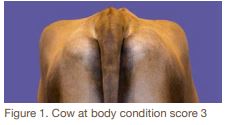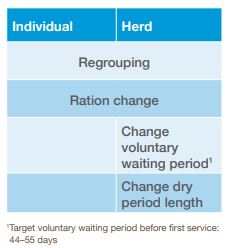- Home
- Knowledge library
- Preparing your dairy cows for drying off
Preparing your dairy cows for drying off
Drying off cows is an important process that must be done correctly to avoid infection and ensure a return to optimal lactation. Find out what do to in preparation.
Four important considerations when drying off cows
- Optimising body condition score
- Reducing milk yield
- Calculating optimum dry period length
- Reviewing dry cow feeding
Managing dry cow feeding is important because it influences the cow’s immune status – both during the dry period and in lactation.
Optimising body condition score
Extended lactation length (more than 340 days, giving a calving interval of 400 days) is likely to lead to over-conditioned cows at drying off, causing:
- Increased risk of metabolic disease
- Poorer immune function in transition
- Potential increase in subclinical (somatic cell count in cows) and clinical mastitis infections
Score each cow 2–4 weeks before drying off.
At dry-off, cows should have a body condition score of 2.5–3.0 (see image below). For cows outside this range, consult with your nutritional adviser and consider:
- Drying off low body condition score cows early to allow recovery of some body condition
- Milking over-conditioned cows for longer with restricted energy intake
Aim to dry off 90% of cows with a body condition score of between 2.5 and 3.0.

Reduce milk yield before drying off
- Only dry cows off when they are producing 15 litres of milk or less
- Drying cows off when they are producing more than 15 litres is a risk for new infection, which cannot be reduced using antibiotic dry cow therapy
- If a cow is producing less than 5 litres of milk, dry her off immediately to reduce infection risks
- Cows must not be milked once daily before drying off
Strategies to reduce milk yield depend on whether you have an individual cow issue or more of a herd-wide problem.

Calculating drying-off periods
- Use expected calving dates, milk yield and body condition scores to calculate drying-off dates
- All cows should have a dry period of 40–60 days
- Dry periods of fewer than 35 days or longer than 70 days reduce lifetime yield
- Optimum dry period duration will depend on lactation number
Dry periods that are too short are associated with reduced yield in the next lactation and an increased risk of new infection.
If the dry period is too long, it may result in over-conditioning, metabolic disease, increased risk of new infection and a reduction in lifetime yield.

